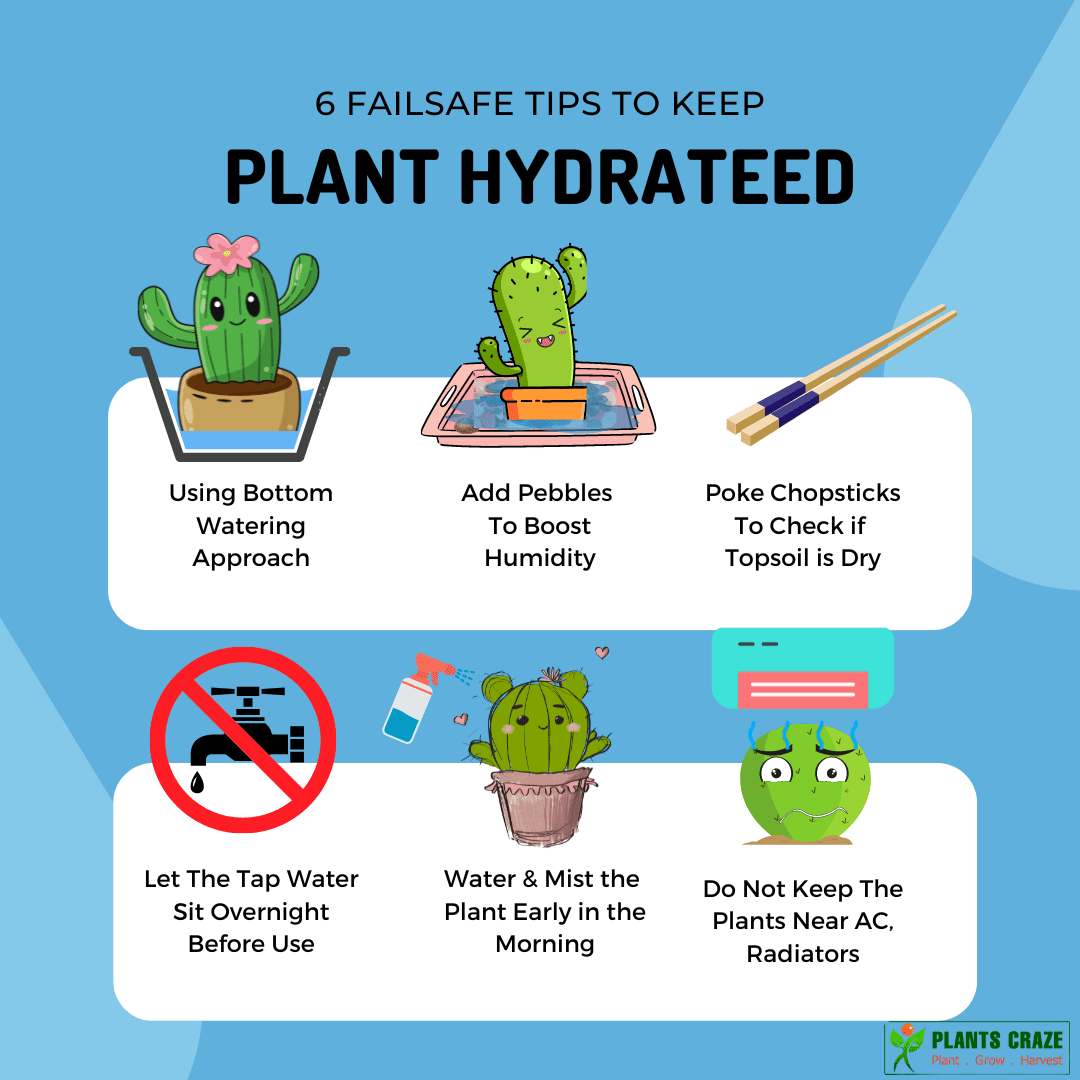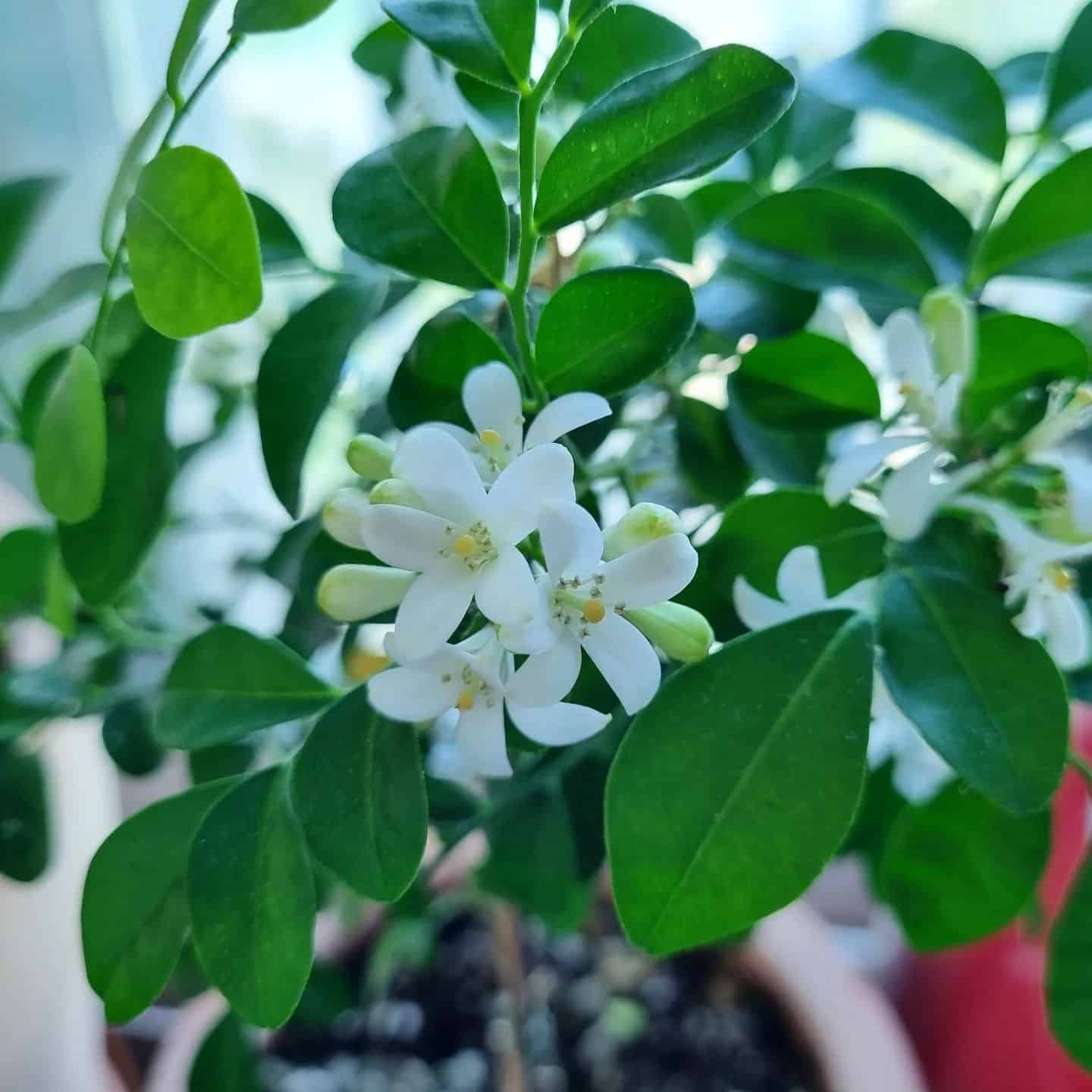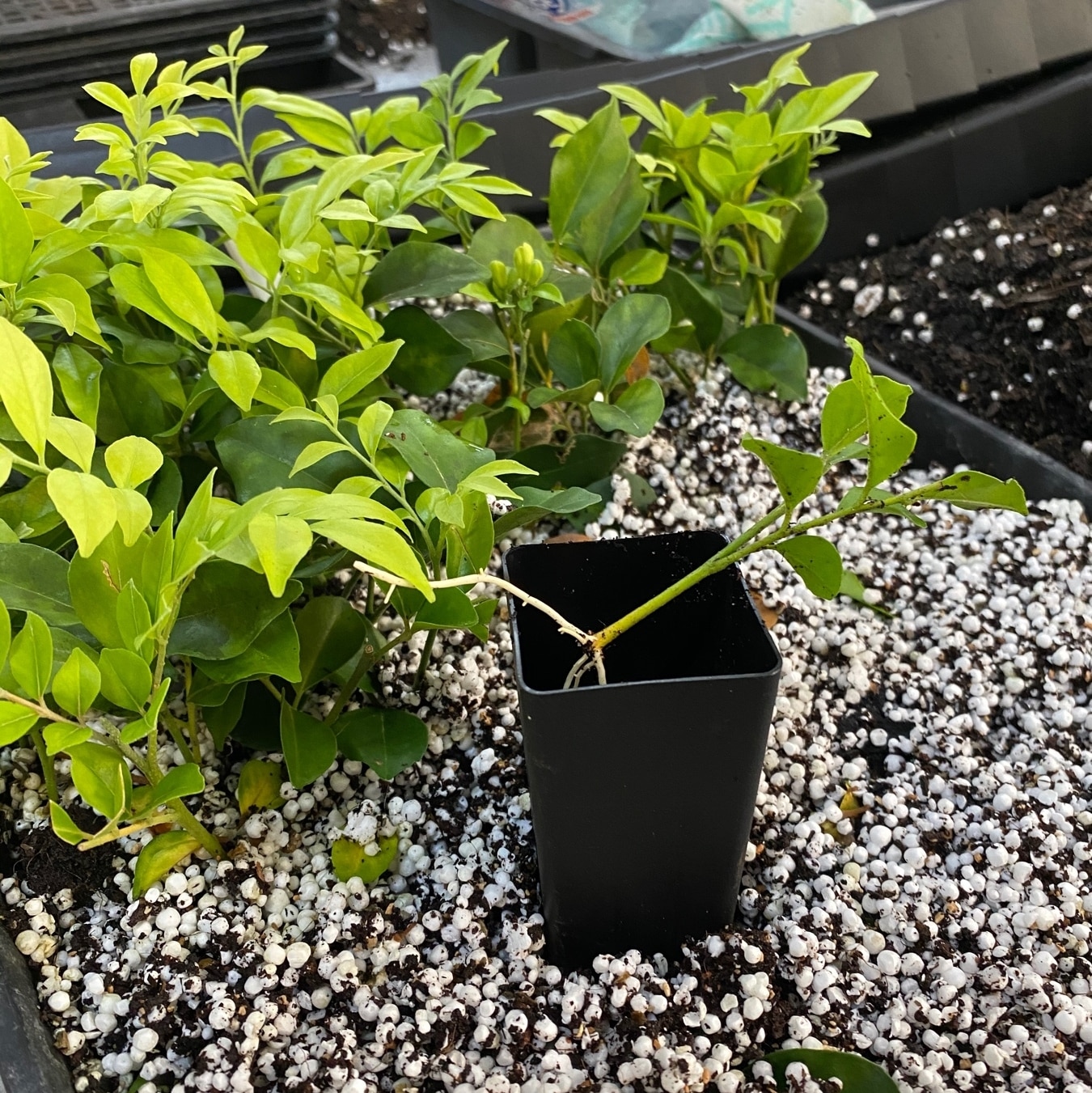Orange Jasmine is a famous hedge and bonsai plant, earning stardom for exotic white flowers, rousing fragrance, and minimal maintenance.
Consider reading the article if you are up for diffusing the endearing aroma of Orange Jasmine indoors.
Table of Contents Show
Orange Jasmine Plant Overview
Known by many monikers such as Mock Orange, Murraya Orange, Orange Jessamine, China Box, etc. Orange Jasmine tree or shrub is native to Tropical and Subtropical Southeast Asia.
Its name, Mock Orange, also conveys confusion with Philadelphus coronarius, a different plant from the other family Hydrangeaceae.

However, the Orange Jasmine flowers are white with flaring recurved petals, vaguely similar to the Star Jasmine or Pink Jasmine blooms.
But the fragrance of the flowers compares to that of Oranges, hence its name!
Learn more about the plant from the table below.
| Feature(s) | Description(s) |
|---|---|
| Scientific Name | Murraya paniculata |
| Common Name | Orange Jasmine Orange Jessamine Mock Orange China Box Satinwood |
| Native Range | Southeast Asia & Australia |
| USDA Zones | Zone 7-12 |
| Plant Type | Evergreen Perennial Tree or Shrub |
| Plants Mature Size | 8-12 feet tall & wide |
| Growing Seasons | Spring, Summer, and Fall |
| Flowering Period | Starting from Spring (Year-round) |
| Uses | Medicinal Ornamental |
| Toxicity | Non-Toxic to humans & pets |
How to Take Care of Orange Jasmine? [Complete Guide]
Let’s learn about Orange Jasmines and how to offer them conducive tropical growing conditions for the best care.

1. Sunlight & Temperature
Orange Jasmine fancies daily 4-6 hours of indirect, filtered sunlight with a warm temperature of 65-90°F.
In USDA 10-12, you can plant your Orange Jasmine outdoors under a semi-shade of Hydrangeas, Azaleas.

Otherwise, place your Orange Jasmine near an east-facing window or a curtained south-facing window. Remember, they are not frost-tolerant.
Thus, they need overwintering indoors. But, high temperatures result in withering leaves and flowers.
You can opt for heat pads, frost blankets, or incandescent grow lamps to keep them warm during winter.
2. Watering & Humidity
A citrus plant, Orange Jasmine, is drought-resistant but demands moist soil during the blooming season.
Pale-brown spots on the leaves are often caused by low humidity (<40%) and lack of water.

Conversely, the overwatered plant has yellow, droopy foliage with stunted growth.
They cause root rot alongside other fungal infections if not treated on time.
Hence, aim for a self-watering device or bottom watering and place the plant on a humidity tray to keep your plant hydrated.
You can cut back on watering your Jasmine tree in winter every 2 weeks.
3. Soil & Fertilizer
Orange Jasmine thrives in organic, well-draining, nutrient-rich soil of pH 6.6-7.5.
To prepare loose, airy soil, combine organic compost, bark, and leaf mulch in an equal ratio.
Or you can mix 1 part of peat moss, loamy soil, organic perlite, and ground limestone.
Additionally, feed them balanced fertilizers to encourage dark green, glossy leaves.
Meanwhile, before the flowering season, you can use phosphoric bloom boosters to encourage vigorous bloom.
As the plant stays dormant in winter, it is better to let them be without fertilizers.
4. Potting & Repotting
Orange Jasmine requires a 6 inches wide and deep terracotta pot to help retain moisture and allow air circulation.
Potbound Jasmine does not grow rapidly, even during the active growing season.

Choose a pot 1-2 inches bigger than the previous pot with multiple drain holes. If they do not facilitate drain holes, drill one yourself.
Moreover, thoroughly soak the plant before repotting Jasmine in early spring to lower repotting stress.
While at it, remove any damaged or dead roots, leaves, or stems using sterilized pruners and keep healthy stems to propagate them later.
5. Annual Pruning
Prune your Orange Jasmine throughout the growing season to remove old, damaged, dead leaves and branches.
Orange Jasmine also makes good hedges and responds very well to pruning. Thus, prune them 3-4 times yearly, with the last trimming in late fall or winter.
Additionally, hard pruning at the wrong time can set back blossoms. Therefore, prune only one-third of the plant at a time.
Moreover, pruning is absolute when they start hosting pests like whiteflies, leaf scales, and sooty mold.
They must also be pruned if infected with blight, rust fungus, and fusarium wilt.
Thus, apply neem oil and copper-rich fungicides to control further infestation.
Orange Jasmine: Growth Rate & Flowering Habit
Orange Jasmine is a tropical plant with a moderate growth rate and grows up to 8-12 feet tall within 3-4 years.
Additionally, Orange Jasmine grows vigorously throughout spring, summer, and fall but remains dormant in winter.
The dark, glossy green leaves are divided into 3-8 oval leaflets in an individual leaf pinnate.
They are known for their signature white flowers that emit aromatic smells reaching as far as 10 feet.
Flowering occurs infrequently throughout the year, often following rain. But flowering is most prevalent from late winter to late spring.
Additionally, Orange Jasmine proliferates the whole season with frequent bloom deadheading.

Moreover, they bloom in a cluster with almost 5-8 blossoms at the terminals of each branch.
After pollination, the blossoms soon produce green fruits, which turn bright, reddish-orange berries in late summer.
Also, the fruits of Orange Jasmine are oval, measuring 12 mm long and 5-14 mm in diameter.
They contain 2 dull, yellowish-grey, or greenish, teardrop-shaped seeds. However, proper growing conditions may push blossoms back, preventing fruit bearings.
These Jasmines are also popular hedge or bonsai plants with a few ornamental varieties.
Murraya ‘Min-a-Min’ is a dwarf variety of Orange Jasmine known as Dwarf Orange Jasmine, a low-growing shrub that acquires a bushy habit.

Orange Jasmine Propagation Methods
To propagate your Orange Jasmine, wait for spring or early summer.
But stem cutting is preferred over seeds due to simple steps with quicker results.
1. Stem Cutting
- Cut a 6-inch long healthy stem without flowers directly below a leaf.
- You can take multiple cuttings but use individual pots for each transplant.
- Apply rooting hormone to the cutting ends.
- Press the cutting about 2-3 inches deep into a potting mix filled in a terracotta planter.

- Cover the cuttings with a perforated plastic bag to ensure humidity.
- Keep the pot in bright indirect sunlight and maintain a 75°F temperature.
- Water daily to keep the soil moist but not soggy.
Within 12-14 days, you can notice new root sprouts at the cutting edges.
Consider transplanting the roots to a 1-2 inches wider and deeper planter once the roots grow 4-5 inches long. Then, proceed with regular care.
2. Seed Propagation
The ripened Jasmine berries bear viable seeds you can harvest during the fall.
Once soaked, remove the skin, gently crack the seed flesh, and again soak them for about 12 hours.
- Remove them from the bowl and set them on a paper towel.
- Moisten the potting mix and place it in a germination tray.
- Place one seed per compartment at about one-fourth inch depth.

- Sprinkle the starter mix on top of the seed to cover them lightly.
- Wrap the tray with clear plastic and poke some holes for air circulation.
- Situate the tray near an east-facing window for 4-6 hours daily
- You can also keep them about 6-12 inches below the grow lights for about 8 hours daily.
- Moreover, mist the soil with water to keep it evenly moist.
After 12-14 days of planting seeds, you can notice the signs of germination.
Once they unfurl a couple of leaves, you can transplant individual seedlings to a 1-2 inches wide and deep planter.
Then proceed with regular care for your young seedling.
Is Orange Jasmine Toxic to Humans & Animals?
Unlike, Orange Jasmine is not poisonous to humans and pets, like cats and dogs.
Moreover, fresh blossoms and berries visually appeal to small children and pets. However, 90% of the fruit comprises a large seed with tasteless pulp.
Thus, even if you can eat those berries, they will only leave a foul taste in your mouth.
Instead, they provide health benefits when consumed in precise doses.
But kids and pets may choke while eating them. So, take slight caution despite its nonpoisonous nature.
Orange Jasmine for Sale
Here are a few online vendors with Orange Jasmine plants to buy.
| Shops/ Sites | Shipping Time |
|---|---|
| Amazon | Within 4-5 days after placing an order |
| Logees | Within 1-2 days after placing an order |
| Etsy | Within 3-7 days after placing an order |
| Top Tropicals | Within 3-7 days after placing an order |
From Editorial Team
Conclusion!
Consistently water Orange Jasmine to prevent over or underwatering problems.
The sudden change in temperature and lighting reduces the growth altogether.
Thus, watch out for dropping temperatures, low-humidity levels, and direct sunlight.


